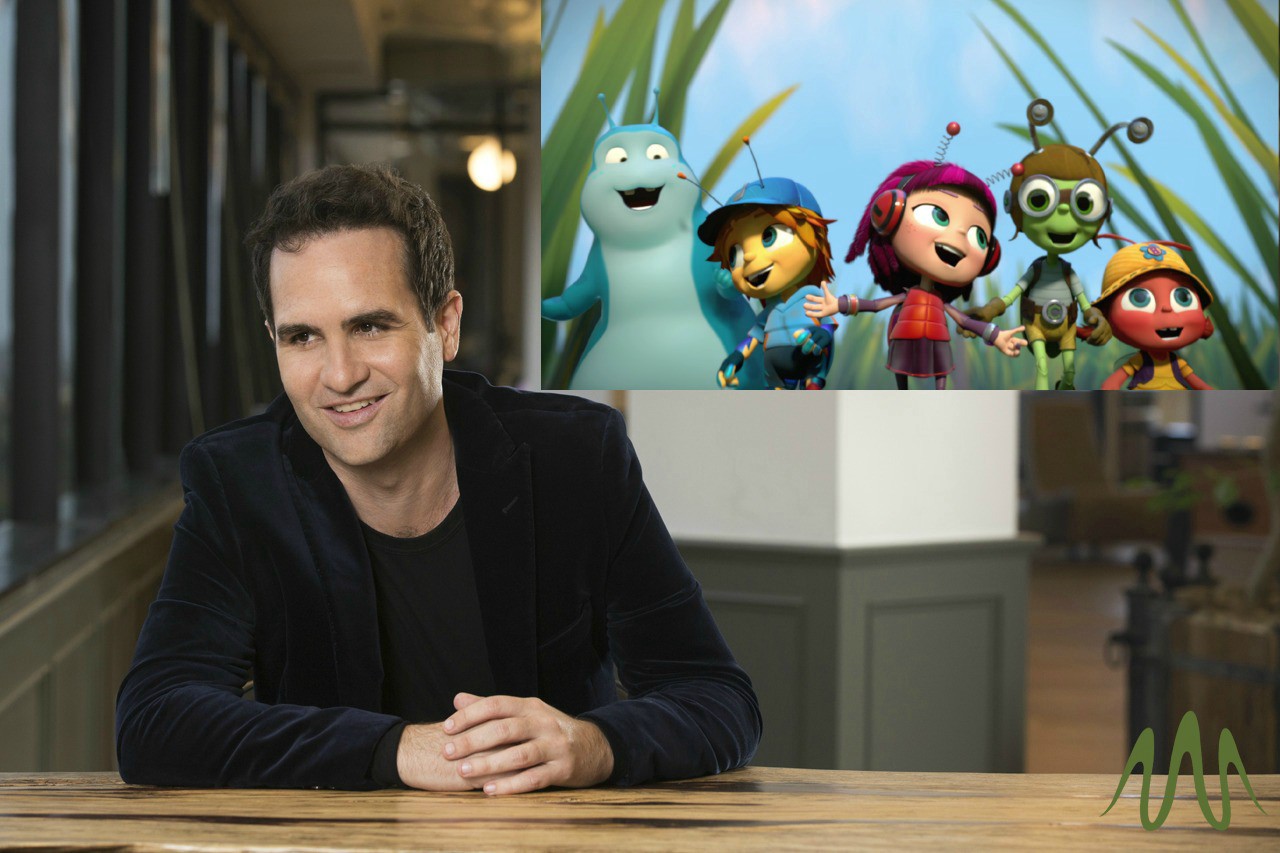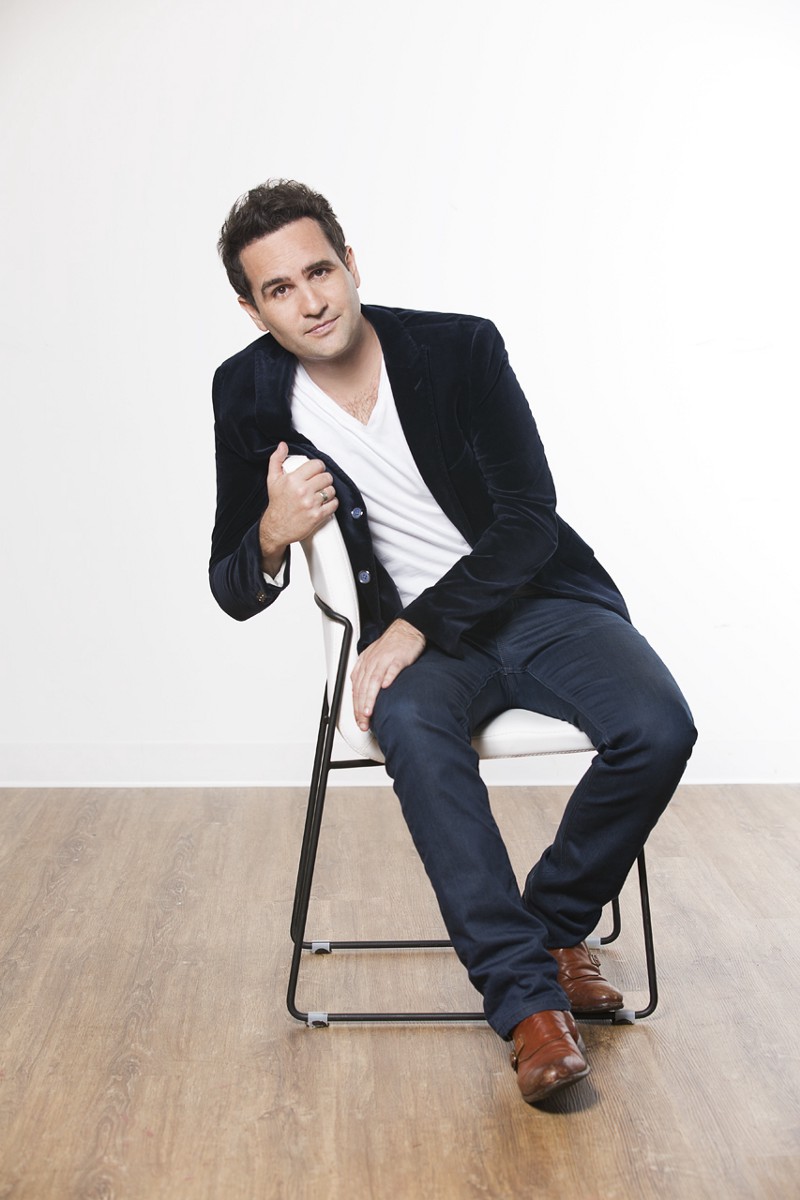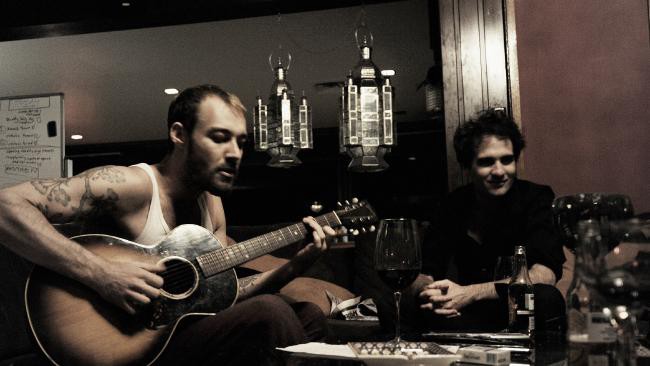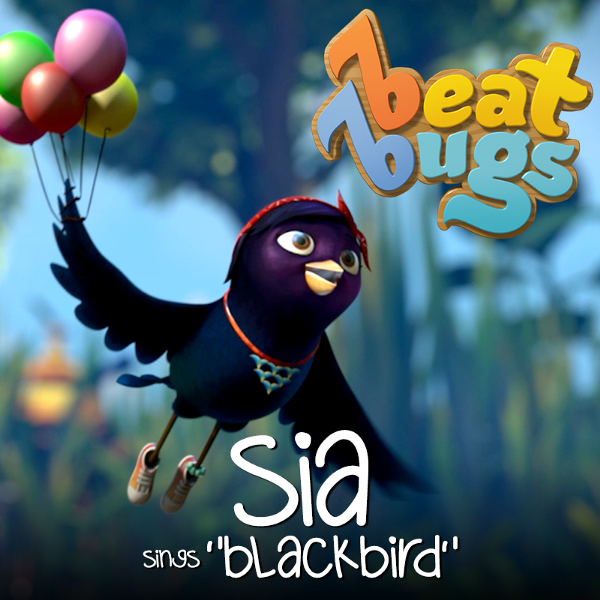
‘Beat Bugs’ creator talks how the innovative Netflix show and music is impacting families everywhere
“Baby you can drive my cawwr. Yes I’m gonna be a star. Baby you can drive my cawwr.”
— My five-year-old singing to himself as he changed into his daily New York Giants uniform. He had no idea I had walked into his room this past Saturday after breakfast.
Friday night is movie night in my house. For the past two months, there has been a unanimous choice amongst the rascals. Beat Bugs and nothing but Beat Bugs.
Beat Bugs is the brainchild of Newcastle director/screenwriter Josh Wakely. Inspired by music by the Beatles, the series tells uplifting and life-affirming stories filled with hope and melody. It follows five best friends who band together to discover life’s most important lessons in an overgrown suburban backyard, which to them is their entire universe. For the series, Wakely worked relentlessly to acquire the worldwide rights to record covers of the entire Lennon/McCartney ‘Northern Songs’ music catalog. Featured artists who cover songs in the show include, P!nk, Eddie Vedder, Rod Stewart, Chris Cornell, Jennifer Hudson, James Corden, Regina Spektor and Sia.
Beat Bugs premiered globally on Netflix this past August. Season two premiered on November 18th. The soundtrack is available on Apple Music and hit retail on November 4th.
Currently, Wakely has used a similar approach in securing the rights to international music icon Bob Dylan’s entire 600-plus song catalog and is creating a television series based on that music.
He has also obtained the rights to the iconic Motown catalog and is developing a Netflix animated series based off this songbook.
As for Beat Bugs, it has been nominated three-times (out of four potential nominations) in the animation category for the 49th Annual AWGIE Awards. Awarded by The Australian Writers’ Guild, the awards recognize and reward excellence in performance writing. Wakely’s Beat Bugs – Yellow Submarine episode won the 2016 AWGIE Award in Animation.
I recently caught up with Wakely, who was back in Sydney on a short rest. We talked in depth about the process of recreating these iconic songs, how they inspired each episode and the immeasurable and unifying effect of the show.

I noticed much of your work has a musical element to it. What is it that makes music such a vital component to your creations?
It’s the highest form of all the arts. It’s the one thing that can shift your mood, change your brain chemistry or take you to another world instantly. We all have a very personal art form in some way. I really like trying to make storytelling in a way that shifts your mood and takes you away from the craziness of the world. To expand what music does in other forms is my life’s passion. The other part of it is, the reason great songs hold up, whether its Bob Dylan, “A Day in the Life” by the Beatles, Motown or what Daniel Johns did with “Straight Lines,” is that they all have great stories within them as well. You follow a narrative throughout it. They also contain great visual material. The Beatles really did that better than anyone.
Do you recall the exact moment where you captured the idea that this show would be based off Beatles songs?
Yes and no. On one level, when I was hearing “All You Need is Love,” I constantly thought about just how perfectly it would work with a children’s series and the messaging within it. It was so pure, wonderful and ambitious. These ideas have been with me and stay with me for so long. By the time I had finally put pen to page, I had been thinking about it for quite some time. Same thing for the Bob Dylan project I have now. I can never really remember the exact moment, but I do know at some point the idea takes over you like a fever. I get obsessed with — I gotta do this.
The idea of doing Beat Bugs was crazy because I kept getting told I would never get the rights to the Beatles songs and that they have never been granted. I was determined to get them because I just knew things like your family sitting around on a Friday night would happen. It’s always lovely to hear the end of the process.
It took you three years to secure the music correct?
Yes it did. I thought it would take six months. I sold the screen play and thought we’d shoot inside of a year, but it became my full-time, all-consuming job. It was a full three year process. I never thought it would take that long. It always felt like it was just around the corner. I didn’t want to be the guy that nearly got the Beatles rights. I was prepared to have a massive fail or get them. That was the decision I made and I’m so glad to be on the other side of it now.

From there, what came next in your process? Did you select the songs you wanted to use first and then write the show around the concept of each song?
It was really me sitting and listening to the songs and envisioning what they would be. Occasionally, it would be the opposite. For example, I wanted to show the value of communicating well and then I identified that “Hello, Goodbye” would be perfect for that. It was a strange marriage. I find coming up with the idea was pretty easy given the power of the stories in the songs. Then it takes a lot of work in the writing room with a bunch of skilled writers to craft every feature so that the story is truly captured. You see with Beat Bugs, that the characters have their own world and emotional lives. It doesn’t just become a complete homage to the Beatles. The characters in the story set the standard. The songs are lucky enough to be intertwined between them.
How did you go about selecting which songs you would base the episodes on?
It was not as much of a process as you would imagine. It was literally laying them all out and following where my mind went — what would happen in “Drive My Car?” There were 300 songs in the catalog I had so I had to really space them and you can see in season two there was a larger sense of narrative. There was also the idea that I may never get the chance to do this again. What a magical thing to be the guy that gets to tell the story of “Yellow Submarine.” To actually get to dive down and go under water with the Yellow Submarine. I remember thinking — people will still be studying “Across the Universe” in 400 years. There’s a reason why the architecture of those songs really hold up. It’s the melodies, but also the stories and writing. It my was hypothesis that it would be embraced just as eagerly by my five-year-old’s mind as it was 40 years ago. That turned out to be correct, which was great. Personally, I had to go to places where my mind wanted to go because I’ve had these songs in my world since I was a child.
What was the process for creating the music? Were the songs recorded after the episode was already complete?
Not necessarily because you had to put the song in through the animation. There would be what’s called an animatic, which is like a snapshot version of what the entire thing is going to look like. They were all really good. As a rule, all the artists would read the scripts, then they would see the early animation. I created the bed of each song with Daniel Johns in Australia. So we had the premise of each song and then we would send it to the given artist and they would add the vocals. We’d get into this creative dialog where we’d say something like, “This sounds really good, but let’s add strings.” Rod Stewart for example, was very collaborative. He got back to us with, “This works, but can we also do this?” People like Eddie Vedder and Chris Cornell were amazing to work with. When we’d get closer to the final animation, we would then craft it so the vocal performance added to the show, but also stayed true to who they are as personalities.

What was it like for you to create the music of each song with Daniel Johns?
It’s the most overused word in the modern lexicon, and I don’t use it often, but Daniel is a stone-cold genius. He does things that take your breath away. I would tell him what I wanted the song to sound like and he would go about manifesting that. I would then lay the process out once he did that. For example, I just had “Blackbird” in my head with Sia singing it, so I would approach her. It was fascinating to find that perfect person for each song. It was a crazy thing, it was like I made up a dream mix-tape of these Beatles songs with other artists doing it.

Did you ever give an artist a few songs to select from?
Sometimes there was a dialog, but for the most part we easily agreed on the song I presented. For Eddie Vedder, I simply said, “I would really love you to do ‘Magical Mystery Tour’” and the same thing with Chris Cornell and “Drive My Car.” We went back and forth with P!nk a little bit to find that perfect match for her ambitious pop sound. With Sia, it was a very lucky thing. She is very selective with what she involves herself in as many artists are. I had this idea of her doing “Blackbird.” Recently someone sent me a tweet from about five years ago, where someone asked her what her favorite Beatles song is and she said “Blackbird.” That’s just total serendipity.


The songs are so well done. They are modern, but in a way that still retains the original nature of the song while appealing to a younger audience.
There was a real fine line between respecting the integrity of each song, identifying what worked with the original and then making sure it would translate to children. The whole idea behind Beat Bugs was making it for families, which is why I get so stoked when I hear about Friday nights with your family for example. You realize it can work for adults as well. They can watch and listen to it without feeling like it’s a chore. We worked incredibly hard to get the balance right with each song. It was an intense process to mix and master them. We have strings and horns on some songs and the best players playing them.
Since the release of the show, and now kicking off season two, what has been the overall impact? Is it as you expected?
I’m surprised on one level that it’s worked on a really large age group. Netflix is so great for that. It’s working for two-year-old babies to ten-year-kids. I’ve also gotten feedback from hundreds of parents all around the world. There’s just a magic about the Beatles that you can talk about for hours, but never really explain. I’ve traveled around the world talking about the show and seeing the global attachment to the Beatles and that they transfer to Beat Bugs has been great.
On a very simple level, I worked on the show for six years. I knew that it would work. I was putting in 18 hour days not only focusing on the music, but also taking the quality of children’s animation to a whole new level. Then about three days before it came out, I had a moment of going, “Oh man, I hope I was right.” So, it’s been really lovely. To think people are watching it all around the world is amazing to me. The feedback has been overly positive and that has a lot more to do with the Beatles than me. The fact that people wanted to re-explore this music with their families has been a great relief.
After all that work, I have to imagine seeing that inspiration surface has been quite an amazing experience?
Yes, absolutely. People have been sending me notes through my company’s website and Netflix has been very clear that this is a show that really matters to people. I hope it has a lot of light ahead of it. I have a journey planned out with these characters and this concept.
Beat Bugs is really an incredible collection of art when you think about all the different elements — the animation, storytelling, the writing, the Beatles songs and the new renditions. Compiling this type of thing is quite the accomplishment on its own, but then there’s this whole other dimension of bringing people together.
Yeah, I think it is relevant to the world right now. The idea of “All You Need is Love,” which is the controlling idea and the main message, not just within Beat Bugs, but I feel that was the main message threaded through all Beatles songs regardless of genre or perspective. Love is a very powerful thing and that’s what I wanted to bring back to families.

If you enjoyed, please recommend below. Follow Artist Waves on: Medium, Facebook & Twitter.
Contact: jeffgorra@gmail


